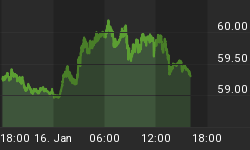Signs Of The Times:
"Credit markets will get back to normal, as there is a lot of money that needs to find a home."
- John Mauldin, August 18
"The Fed will ultimately ride to the rescue."
- Senior Investment Officer
Bloomberg, September 4"Lowering interest rates will certainly help the stock market. There is no question about it."
- CIO Harris Private Bank
Bloomberg, September 4Recently comparisons to the panic of 1907 have been widely circulated. One of the reasons seems to be the notion that J.P. Morgan single handedly prevented the crash from turning into a disaster. The actual time line shows that this is not the case.
For some time we have considered the asset inflation era that culminated in the 1873 bubble as an appropriate illustration for our era of asset inflations. America recorded impressive immigration and within this the start of a shift of population from the country to the cities. It was a remarkable transformation to an agricultural and industrial giant. According to W.W. Rostow, in 1840 the U.S. had 5% of the world's industrial production. By the 1880s this had jumped to 29%.
As with today, the U.S. was running an experiment in fiat money, with the usual volatility in prices and interest rates, not to overlook irony.
As the boom matured during the summer of 1873 credit markets showed the typical dislocations, which inspired the leading New York newspaper to editorialize that with the policy latitude permitted by a fiat currency nothing could go wrong.
As the trading days of September advanced the credit markets became more distressed and in London, which was the senior market, central bank policy was debated.
The lead story in The Economist of September 20, 1873 conveyed conflicting forces:
"The State of the Money Market"
"The continued abundance of money in Lombard Street inclines some people to doubt the necessity for the precaution lately recommended of an immediate advance [increase] of the Bank rate. It has often happened before that the Bank of England, by keeping its own rate low and discounting freely, has been able to check an impending rise [in market rates] for a time."
"In fact, all the circumstances which we described a week ago as calling for an advance of the rate continue . . . The New York banks have for months been in a position of chronic difficulty, and there is no doubt a good deal of difficulty arising out of the state of the currency."
What's new?
The 1873 mania included hot action in the mining sector and the big high-tech stock was Western Union, which had completed telegraph service across North America in 1861 as well as the stock ticker in 1869, and money services transfers in 1871.
The bear market lasted until 1877.
Stock Markets: Our theme has been that the bull market would have a rational ending. Although the exuberance was more in the credit markets than in the senior stock indexes , as in 2000, the process of a top can be methodical - even including the seemingly irrational liquidity panics.
The main influence on the stock market has been the change in the credit markets. The most blatant speculations seem to fail when the yield curve reverses to steepening. That was essentially accomplished in May, and the shock to the financial markets as the difference between leverage and true liquidity was discovered has been impressive.
The other important change was the resumption of the subprime problem, which turned with the reversal to the credit spread widening that often occurs in May.
The rebound in the subprime bond made it to 84.61 on May 24, and with its downturn traditional corporate spreads started widening. For BBB the "low" was 104 bps, over treasuries, and this is now out to 150 bps. Junk has gone from 424 bps to 721 bps.
Of interest is that junk widened with the initial crisis to 694 bps on August 16 and narrowed to 669 bps. It is now well through the 694 bps resistance, and other corporate spreads have accomplished the equivalent, which is not encouraging for the stock market.
The street has seen legions of concerned commentators worrying about U.S. budgetary and trade imbalances, but we have argued that there was little point in following these as when the reversal came it would not be noticed - nor would it be seen in any change in earnings outlook or in Fed policy, which has been to accommodate the boom.
The change was expected to come from the credit markets and it has.
We've been calling the dedication to standard evaluations and always wise Fed policy as "comfort food". "Bear food" will be discovered when the senior indexes break down. Lately technicals such as volume and A/Ds have been poorly.
As for these pages, we enjoy "food for thought" and the general advice has been to sell the rallies.
















